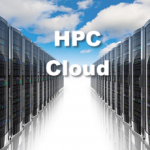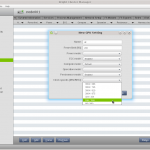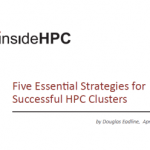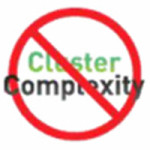This week we explore strategies for crafting an HPC Solution for manufacturing looking at Dell technology powered by Intel and how it is dedicated to maximizing the existing CAE software license investments made by Backbone and Tier One manufacturers.
Easily Scale Lustre to Petabytes of Data
This week we look at various attributes including how easy it is to scale Lustre file systems. The inherent scalability of Lustre aggregates storage capacity across many servers. I/O bandwidth also scales as more storage servers are added, and can be dynamically adjusted as needs change and demands for more storage capacity and bandwidth grow.
Preparing for HPC Cloud Computing
Make sure you use Cloud services that are designed for HPC applications including high-bandwidth, low-latency networking, exclusive node use, and high performance compute/storage capabilities for your application set. Develop a very flexible and quick Cloud provisioning scheme that mirrors your local systems as much as possible, and is integrated with the existing workload manager. An ideal solution is where your existing cluster can be seamlessly extended into the Cloud and managed/monitored in the same way as local clusters. Read more from the insideHPC Guide to Managing HPC Clusters.
How to Manage Heterogeneous Hardware/Software Solutions
Heterogeneous hardware is now present in virtually all clusters. Make sure you can monitor all hardware on all installed clusters in a consistent fashion. With extra work and expertise, some open source tools can be customized for this task. There are few versatile and robust tools with a single comprehensive GUI or CLI interface that can consistently manage all popular HPC hardware and software. Any monitoring solution should not interfere with HPC workloads.
Manage HPC Cluster Growth
Smaller clusters often overload a single server with multiple services such as file, resource scheduling, plus monitoring/management. While this approach may work for systems with fewer than 100 nodes, these services can overload the cluster network or the single server as the cluster grows. InsideHPC Guide show a plan for scalable HPC cluster growth
How to Manage HPC Cluster Software Complexity
HPC systems rely on large amounts of complex software, much of which is freely available. There is an assumption that because the software is “freely available,” there are no associated costs. This is a dangerous assumption. There are real configuration, administration, and maintenance costs associated with any type of software (open or closed).
Defining HPC Cluster Success Factors
The true cost of operating a successful HPC cluster extends beyond the initial hardware purchase or power budget. A truly well run and efficient cluster also minimizes the amount of time, resources, and level of expertise administrators need to detect and mitigate issues within the cluster.
Five Essential Strategies for Successful HPC Clusters
Currently, there are many trends in HPC clustering that include software complexity, cluster growth and scalability, system heterogeneity, Cloud computing, as well as the introduction of Hadoop services. To help our audience build and manage successful HPC Clusters the editors of insideHPC have created this article series called “the Five Essential Strategies for Successful HPC Clusters.”










